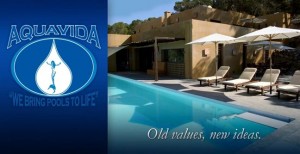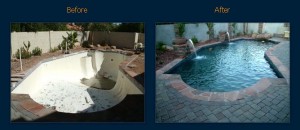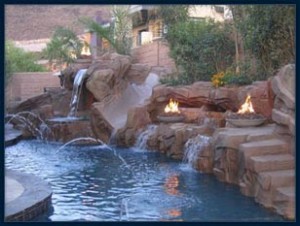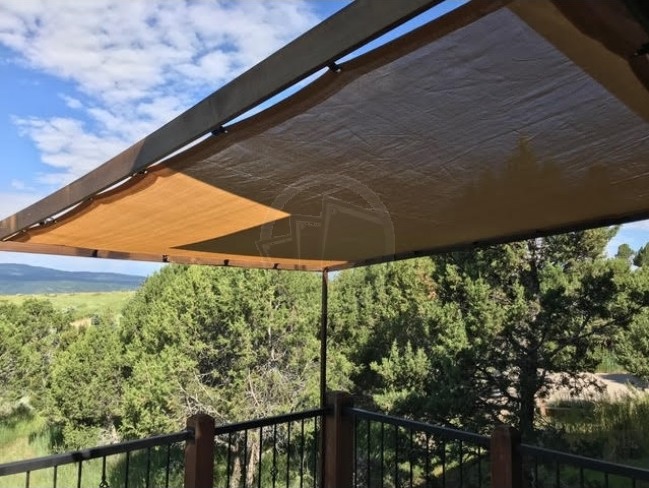Green’s the new black, as the fashionistas of the world would say, and it’s hitting the pool and spa runway full force. Energy-saving, eco-friendly products are making their way into the market, teasing dealers with trendier options and enticing homeowners to save a buck or two — not to mention the Earth. It’s time to look into upgrading and revamping the pool and making way for the next generation of “greener” pastures.
 “The average age of pools we are remodeling is 15 to 20 years old,” says Thomas Lopez, president of Aquavida Pools in Phoenix. “At that point in time, they didn’t really offer any economical or efficient motors back then.” But times have changed, and repair-driven pool remodels are now taking a backseat to lifting up the hood and replacing what’s inside — because you want to, not because you have to.
“The average age of pools we are remodeling is 15 to 20 years old,” says Thomas Lopez, president of Aquavida Pools in Phoenix. “At that point in time, they didn’t really offer any economical or efficient motors back then.” But times have changed, and repair-driven pool remodels are now taking a backseat to lifting up the hood and replacing what’s inside — because you want to, not because you have to.
Pool remodeling can be costly, especially if moving toward a more eco-friendly backyard. It’s an investment, says Lopez, and one that not everyone is able to make.
Green pool makeovers are a smaller part of the remodels Aquavida Pools does, says Lopez, because of the financial investment Green renovations can cost anywhere from $1000 to $35,000, adds Lopez, depending on what’s being done.
 One of the main consumer selling points of going green — besides being more eco-friendly, of course — is the financial payback. But the initial cost of the project can scare customers away from green renovations. In today’s unstable economy, customers may have a hard time seeing beyond the bottom line and into the future.
One of the main consumer selling points of going green — besides being more eco-friendly, of course — is the financial payback. But the initial cost of the project can scare customers away from green renovations. In today’s unstable economy, customers may have a hard time seeing beyond the bottom line and into the future.
Pump Magic
For the consumer who has just started thinking about remodeling a pool, there is a good place to start that doesn’t break the bank. “Probably the most economical approach is the basic industry-standard upgrade pump, an [energy efficient motor],” suggests Lopez. “The armatures in the motors consume less energy,” adds Lopez, so at a minimum, he recommends customers doing this upgrade.
But for consumers who are able to put a little more investment into their pool remodel, Lopez recommends a programmable pump. While these pumps generally cost more than the standard upgrade, their payback is well worth it.
Behind The Curtain
Micromanaging the pool through the use of a home automation system has really taken off, and while it’s more popular to the buying public as a convenience, manufacturers are eagerly finding ways for consumers to understand its energy-saving purpose, as well.
 Incorporating an automated system during the pool remodeling process is a must have for the pool owner on the go. Time is a precious commodity these days and an automated pool makes life that much simpler.
Incorporating an automated system during the pool remodeling process is a must have for the pool owner on the go. Time is a precious commodity these days and an automated pool makes life that much simpler.
“Controls themselves add flexibility and automation to managing the pool, even if people have got time clocks,” says Lopez. “Whenever you’ve got a proper pool controller, you can have multi-day or weekend settings. You can have settings for different periods of the year.”
Not only does automation offer a finer, more optimized control of pump speed, but it also allows “you to do a better job of managing energy-efficient equipment.You claim more energy savings from it, and at times, it’s what actually enables the energy savings in some of the other equipment.
Here And There
Little upgrades also mean bigger savings. Lopez recommends owners change over to LED lighting. The lights consume considerably less power and they last a lot longer, not to mention, “you probably have around a 80 percent savings in energy consumption with LED lighting,” he adds.
A simpler renovation suggestion is a programmable time clock. Phoenix’s swim season ends around the middle of October, says Lopez, but he notes that customers with a typical Intermatic time clock would still allow the pool to run on an eight-hour cycle, even during the off-season.
“So when you have a programmable time clock, you are able to put two program groups in it and set it to the exact day, so it will switch from group A to B, meaning summer and winter,” adds Lopez. Oftentimes, Lopez groups the time clock with the standard energy-efficient motor, inviting customers to start with a small, yet affordable eco-friendly renovation.
“Clearly, when you look at the energy savings opportunity, that falls in very nicely with the big push that’s going on in the world at large,” says Lopez. “Everybody is paying attention to the energy crisis. We aren’t green for the sake of being green. Everything is focused on the payback for the consumer. People are looking for the payback.”
Via EPR Network
More Construction press releases













